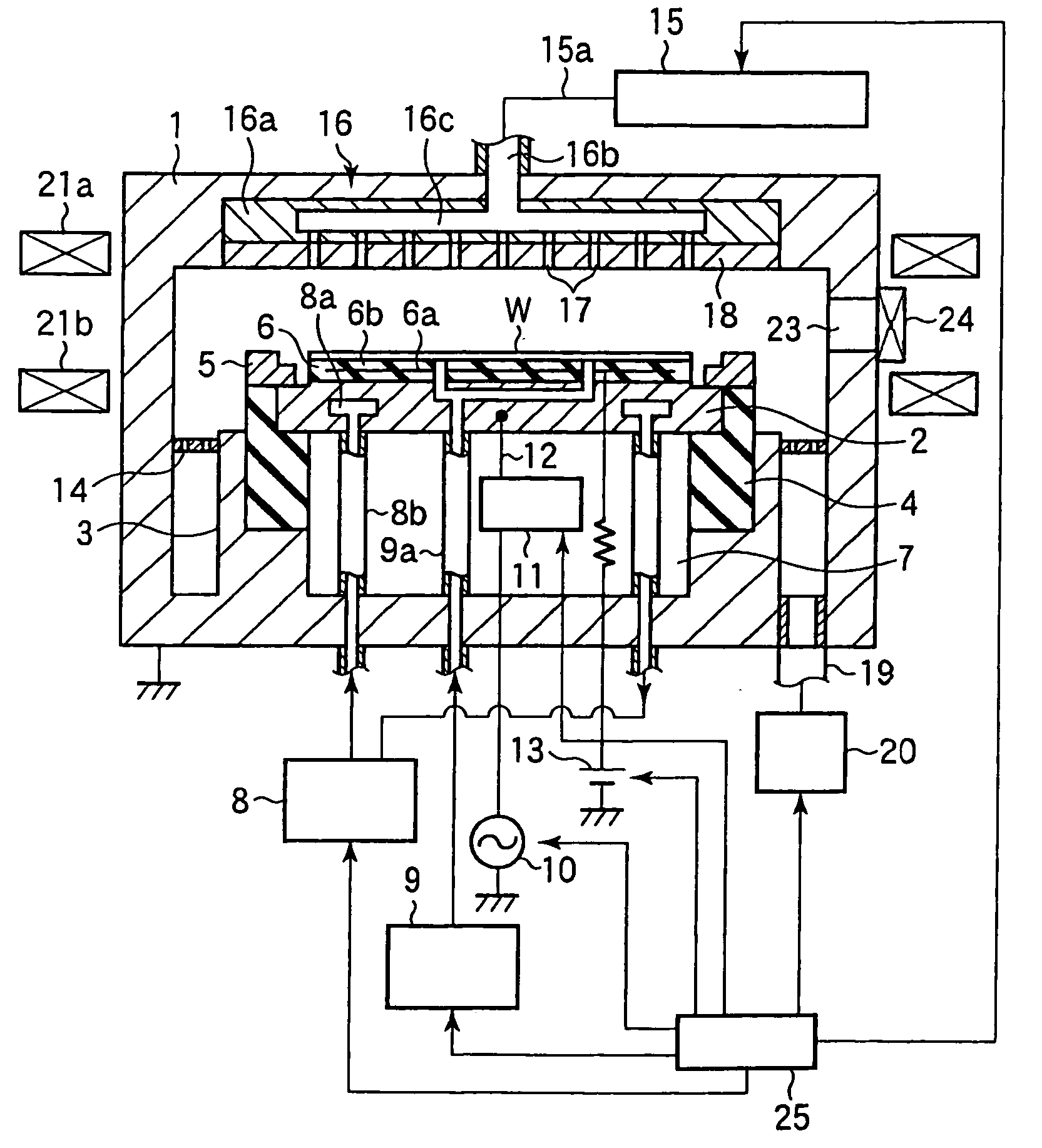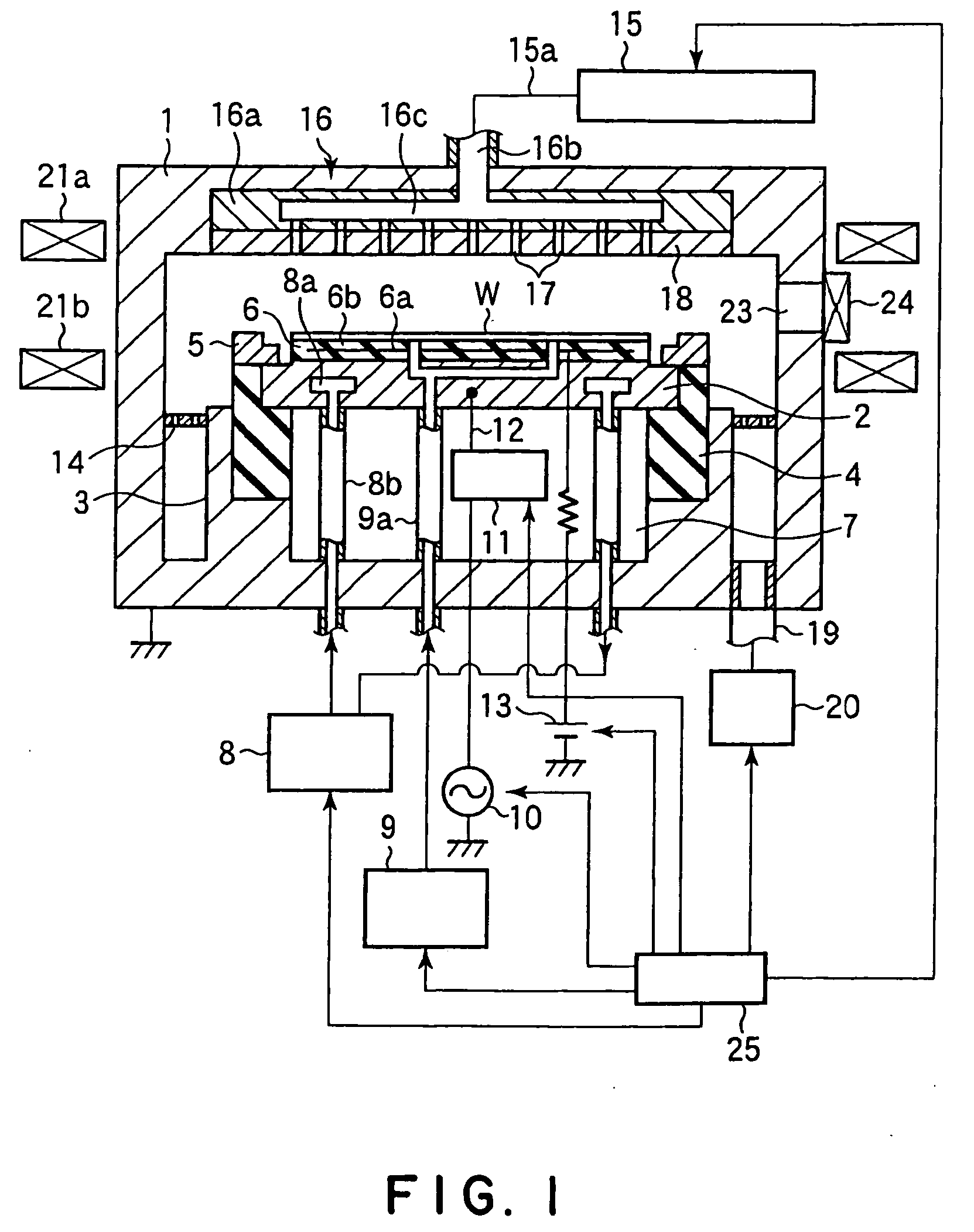Method and device for plasma-etching organic material film
a technology of organic material and plasma etching, which is applied in the direction of plasma technique, solid-state device details, semiconductor/solid-state device details, etc., can solve the problems of deterioration in the etching selectivity of organic material relative to inorganic material film, inability to achieve high etching rate and high etching selectivity simultaneously, disadvantageous in terms of considerably degraded uniformity in electron density (plasma density), etc., to achieve high selectivity and high uniform
- Summary
- Abstract
- Description
- Claims
- Application Information
AI Technical Summary
Benefits of technology
Problems solved by technology
Method used
Image
Examples
Embodiment Construction
[0052] An embodiment of the present invention will be described below with reference to the accompanying drawings.
[0053]FIG. 1 is a sectional view of a plasma-etching apparatus for use in carrying out the present invention. The etching apparatus includes an air-tight, almost cylindrically-shaped process vessel 1 made of, e.g., aluminum. A wall surface of the process vessel 1 is oxidized. The process vessel 1 is grounded.
[0054] In the process vessel 1, there is disposed a support table 2 that horizontally supports a wafer W as a substrate, and serves as a support electrode (lower electrode). The table 2 is made of, e.g., aluminum and its surface is oxidized. The table 2 is supported by a support unit 3 projecting from a bottom wall of the process vessel 1 through an insulation member 4. A focus ring 5 made of a conductive material or insulative material is disposed to correspond to an upper periphery of the table 2. When a diameter of the wafer W is 300 mm+, the focus ring 5 having...
PUM
| Property | Measurement | Unit |
|---|---|---|
| Electric potential / voltage | aaaaa | aaaaa |
| Area | aaaaa | aaaaa |
| Distance | aaaaa | aaaaa |
Abstract
Description
Claims
Application Information
 Login to View More
Login to View More - R&D
- Intellectual Property
- Life Sciences
- Materials
- Tech Scout
- Unparalleled Data Quality
- Higher Quality Content
- 60% Fewer Hallucinations
Browse by: Latest US Patents, China's latest patents, Technical Efficacy Thesaurus, Application Domain, Technology Topic, Popular Technical Reports.
© 2025 PatSnap. All rights reserved.Legal|Privacy policy|Modern Slavery Act Transparency Statement|Sitemap|About US| Contact US: help@patsnap.com



